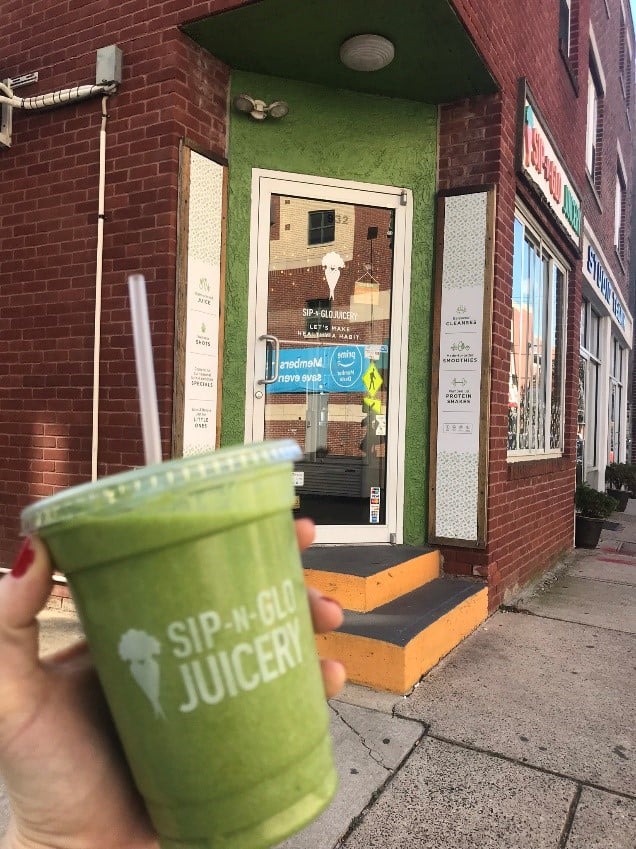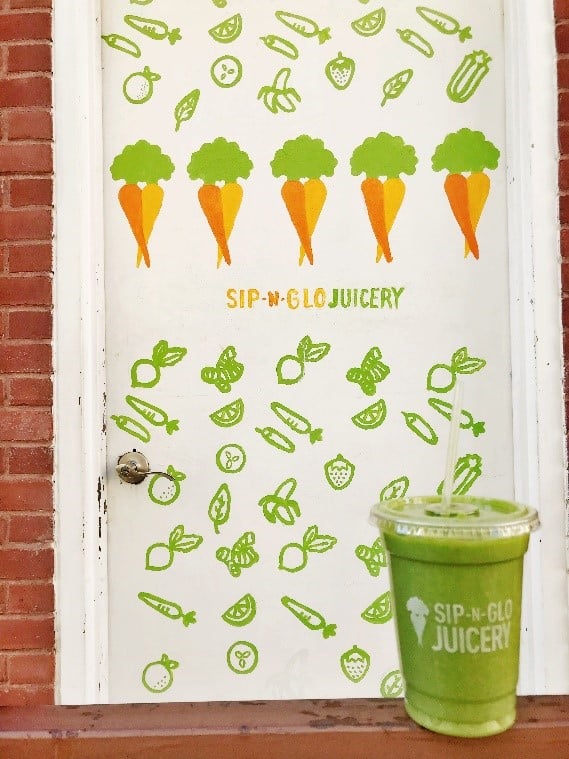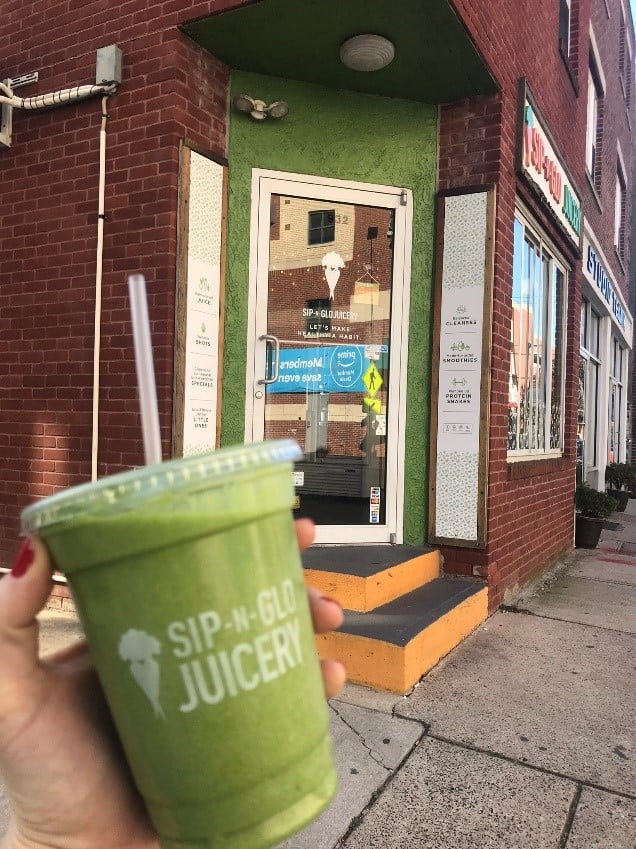
Author's Note: Sadly, Sip-N-Glo shut down in early 2021. We wish their team good luck in their future endeavors!
With warm weather on the horizon, I can hear the smoothies and cold juices practically calling my name. I’m forever thanking Sip-N-Glo for being there when the cravings hit hard. With three locations in the city (932 South, 257 S 20th St and 1700 Sansom). I can easily pop into a shop for a grab-and-go juice or made-to-order smoothie.
I’m trying to remember when the juice and smoothie trend really emerged because I get the question all the time from clients: “can I just juice my veggies?” When it comes to health and nutrition, it is true, people are always trying to make things as easy as possible. Over the years, I’ve had many clients struggle to eat their recommended fruit and vegetable servings for the day.
Eventually something clicks (or I sneakily drop a hint) that they don’t have to physically chew every single fruit and vegetable to reap their benefits. On the other hand, I also don’t recommend that ALL your fruit and veggies come in blended form, but if that’s all you’re willing to do, it’s better than nothing!
At Sip-N-Glo, founder, Kristin Lubsen, opened her first juicery in 2013 with one mission– to share the benefits of fresh juice while positively effecting the Philadelphia community and supporting other local businesses. The growing company whole-heartedly believes that “healthy is a habit”, which is a philosophy that my team and I support 100%.

Every day, I tell clients that forming healthy habits isn’t easy at first. But once you make eating well and taking care of yourself a habit, it’s no longer a chore. Sip-N-Glo uses freshly picked fruits and vegetables and high-quality ingredients like activated charcoal, CBD, almond butter and plant protein, to create the most nutritious juices and smoothies we’ve seen on the market. Their main goal is to “supply wholesome treats that are as gratifying as they are guilt-free.”
The menu spans a wide array of:
- Cold-pressed bottled juices
- Chilled soup
- Made to order smoothies
- Bottle protein shakes and nut milks
- Wellness drinks and shots
- Made-to-order wheat-grass shots
So, what is cold-pressed juice in the first place?
Remember those old hand-crank juicers your parents or grandparents used to use to make fresh OJ..? Those intense contraptions that squeezed fruit and veggies between two metal plates resulting in fresh juice… Yep, it’s just like that, only fancier. Modern day juicers first chop and grind produce, and then apply hydraulic pressure. This process separates the juice from the pulp.
And how is cold-pressed juice different from what you can buy off the shelf in a store?
As long as they’re served fresh, cold-pressed juices retain more vitamins and minerals than traditional packaged juice. Most bottled juice contains added sugar or artificial sweeteners. You won’t find these additives in cold-pressed juices. Plus, you’re getting even more nutrients when you combine more than one fruit or vegetable into a juice rather than eating a single fruit or veg in orange juice or apple juice.
Are there negatives?
The biggest downside to juicing is that some fiber is lost during the manufacturing process. To be more specific, when it comes to juicing you lose most of the insoluble fiber, but the soluble fiber remains! We need fiber in our diets, but it can be a tricky process to understand. Fiber is the portion of plant foods that the body cannot absorb or digest. There are two types of fiber: soluble and insoluble, and both contribute unique benefits to the body. Soluble fiber binds to bile (the digestive aid that helps break down fats and is reabsorbed into the body after digestion) and allows it to be excreted from the body. Once the bile is excreted, your liver must replenish it. To do so, it uses the LDL, or “bad cholesterol”. The science-y takeaway is that soluble fiber helps to lower your “bad” cholesterol. Soluble fiber also helps you feel full by slowing the progression of food through the digestive tract. Insoluble fiber remains intact in your body and adds bulk to the stool, which keeps your bowels regular, fills you up, and helps digestion.
The bottom line…
It’s one of our go-to phrases: everything in moderation. Fresh cold-press juices are great BUT they shouldn’t be your only way of eating fruits and vegetables. Strive for meals with a wide variety of fruits and vegetables, enjoyed using several different preparation methods. And when in doubt, let the experts at Sip-N-Glo do the juicing and do your best to enjoy a plethora of fresh fruits and veggies at home!
Want to read more about our top picks in Philly? Click here!

Topics





